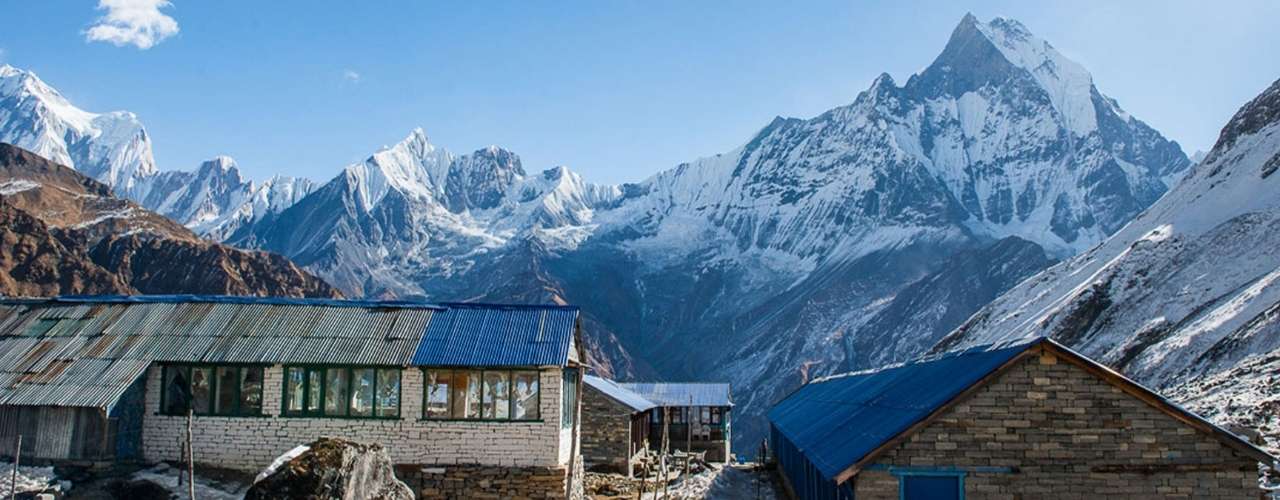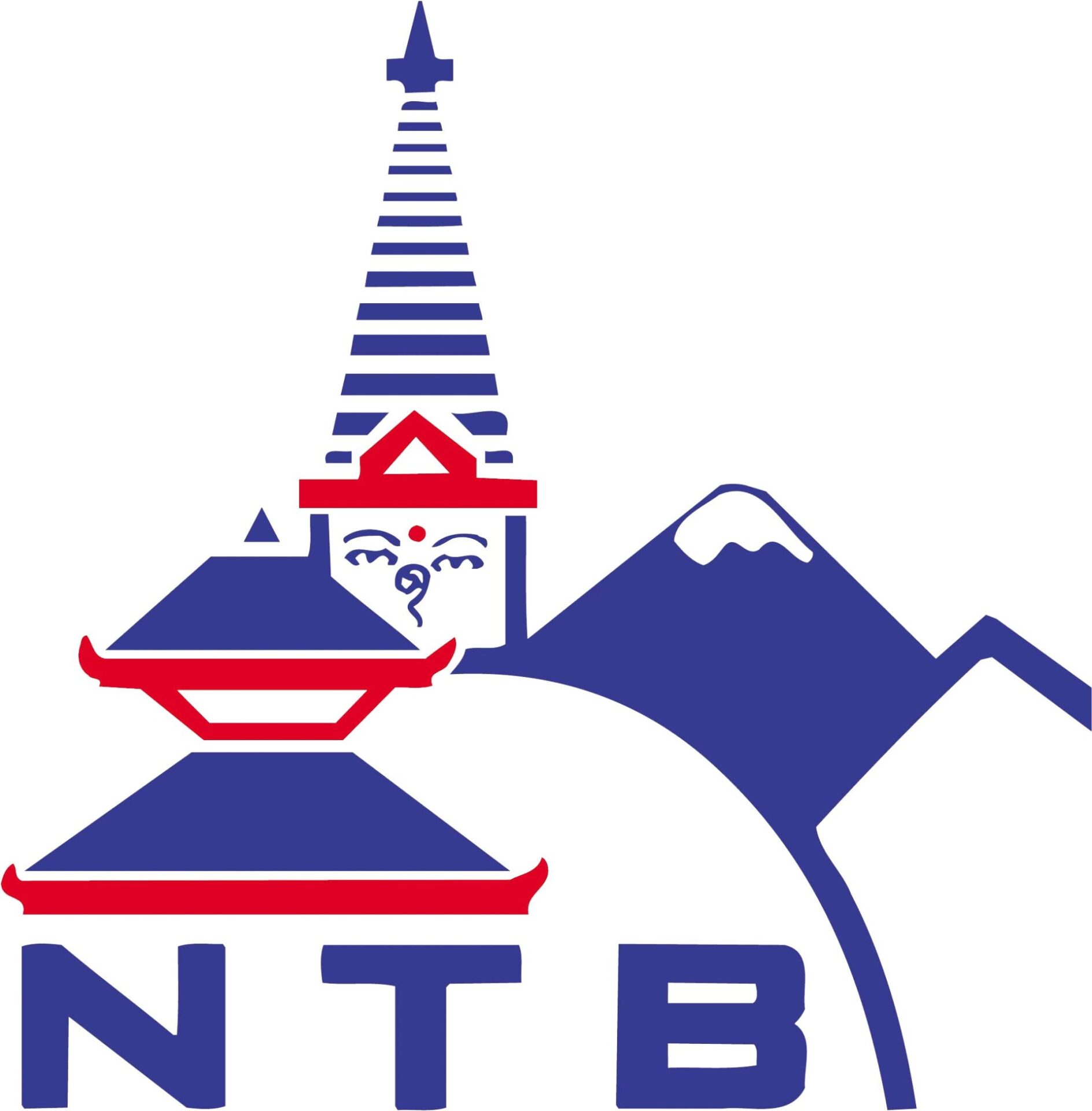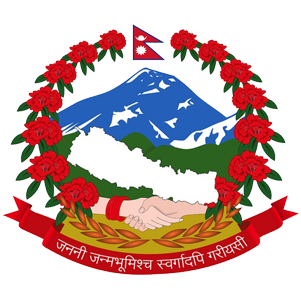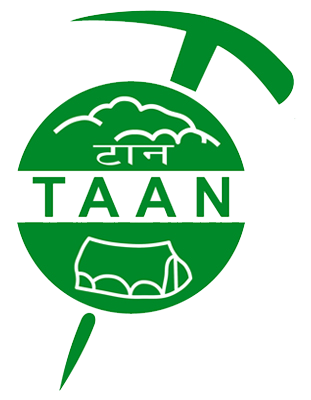Annapurna Region
Discover the Annapurna Region: Majestic Peaks and Vibrant Culture
Nepal’s Annapurna region offers some of the most amazing trekking opportunities in the world, with a breathtaking and diverse landscape. It is well known for its majestic peaks, lush forests, and vibrant culture, and it nestles away in the Himalayas. The stunning Annapurna Massif, which includes the tenth-highest mountain in the world, Annapurna I, and many other peaks, is located in this area and attracts trekkers and mountaineers from all over the world. Two of the most well-known treks in the region are the Annapurna Circuit and Annapurna Base Camp treks, which offer a combination of strenuous landscape, breathtaking views, and interactions with local people. Adventure seekers and environment lovers should not miss visiting the Annapurna region, which is known for its breathtaking natural beauty and welcoming people.
Trip Advised on This Region
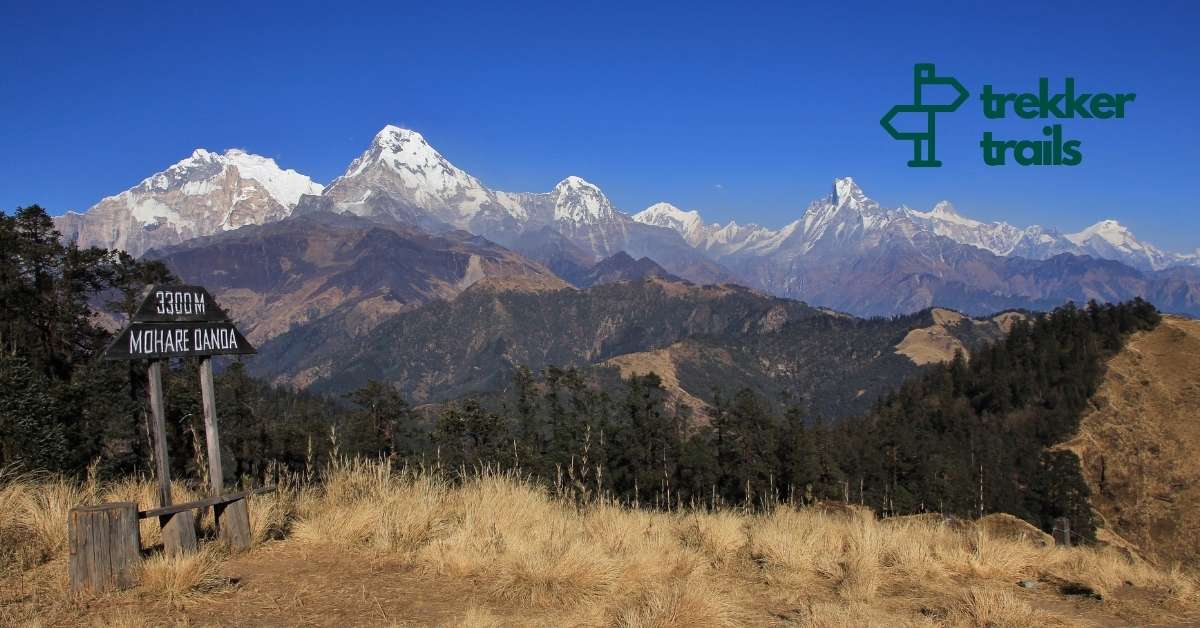
Mohare Danda Trek
Explore the Enchanting Mohare Danda Trek: Annapurna Panorama!! The Mohare Danda Trek is an awe-inspiring journey through the Annapurna...

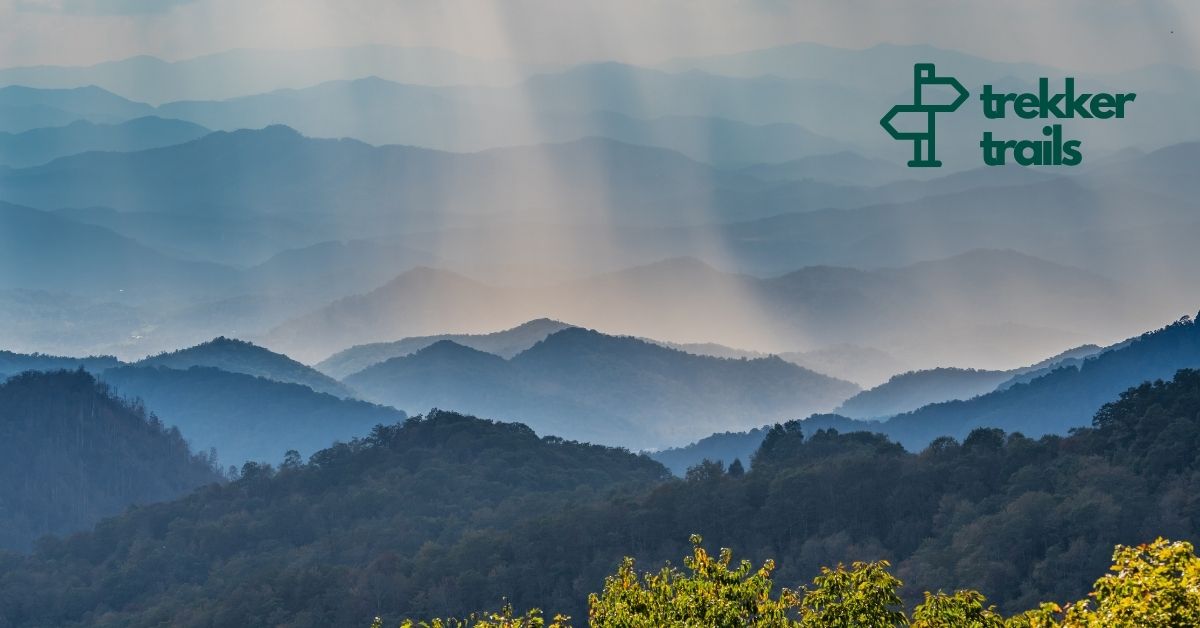
Khopra Ridge Trek
Khopra Ridge Trek: A Journey to Himalayan Majesty!! The Khopra Ridge Trek is a unique and off-the-beaten trail in...

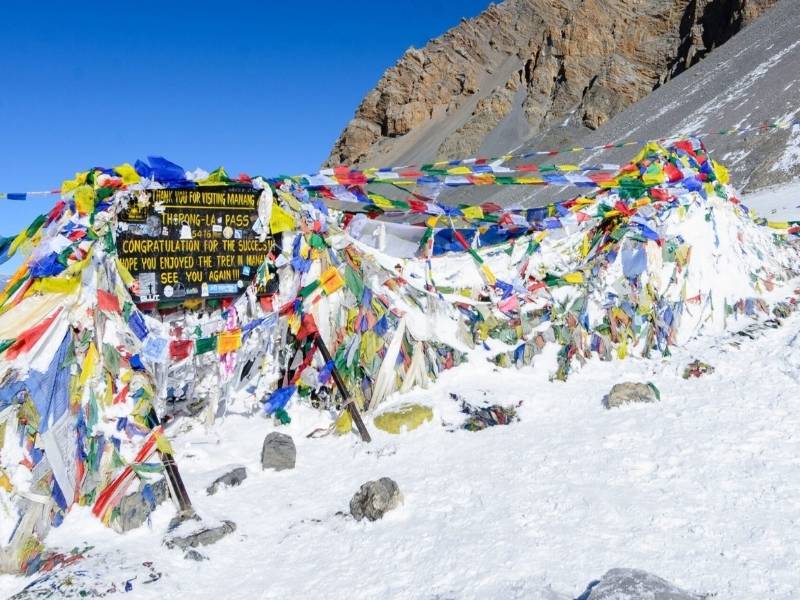 From $ 805
From $ 805
Thorong La Pass Trek
Thorong La Pass Trek – Annapurna Circuit Adventure!! Thorong La Pass is a high-altitude mountain pass in the Annapurna...

Read More About This Region
Historical Evolution
- Stone Age: The Annapurna area has a long and colorful past that goes back to history. It appears from archeological finds that people have lived in the region since the Stone Age. Since the Gurung and Magar populations have been living in these difficult mountainous areas for many years, the region’s identity has a strong foundation in its traditions and customs.
- Early Expeditions and Conquests: The Annapurna region began to attract mountaineers and explorers from all over the world in the 1950s and 1960s. One of the 14 highest mountains in the world, Annapurna I, was successfully climbed for the first time in 1950 by a French team under the guidance of Maurice Herzog and Louis Lachenal. This was a remarkable achievement in mountaineering history.
- The Evolution of Trekking Tourism: The region attracted attention from throughout the world after the successful ascents of Annapurna and other peaks. Trekking tourism in the Annapurna region consequently took off. Trekkers now have easier access to the region through the 1980s construction of the Annapurna Circuit trekking trail. The region quickly developed a reputation as one of the world’s top trekking destinations.
- Gateway to Different Adventures: Trekking and mountaineering are not the only adventure sports accessible in the Annapurna region. These experiences include rock climbing in the Manang Valley, white-water rafting on the Seti River, paragliding in the charming town of Pokhara, and touring the region’s culturally diverse villages. The Annapurna region is a great place for nature lovers, adventure seekers, and cultural enthusiasts due to its unique environment, rich biodiversity, and vibrant culture.
Main Attractions & Their Legends
- Annapurna Conservation Area: Renowned for its diverse flora and animals, the massive Annapurna Conservation Area is a protected area. Numerous endangered animals, including red pandas and snow leopards, make it home. The conservation effort itself is the mythology here, as it symbolizes the commitment to preserve the area’s biodiversity and natural beauty for future generations to enjoy.
- Pokhara Valley: At the heart of the Annapurna range, close to Phewa Lake, lies the charming city of Pokhara. There is a myth about Pokhara, the City of Lakes, and that it is a gateway to the Annapurna region. Trekkers and environmental enthusiasts should not miss it because of its tranquil lakes, breathtaking mountain views, and exciting adventure options.
- Kali Gandaki Gorge: One of the world’s deepest gorges, the Kali Gandaki Gorge has a unique atmosphere of mystery. The gorge doesn’t have a particular mythology attached to it, but its dramatic cliffs, rapid river, and abandoned surroundings create an environment that is sure to leave an impression on anybody who visits.
- Manang: The Manang Valley is a high-altitude area renowned for its breathtaking vistas of the mountains and Tibetan influences on its culture. Manang’s image derives from its close cultural ties to the Tibetan people, who are known for their unique customs, Buddhism, and the spectacular environment in which they have flourished for a long time.
- Muktinath Temple: The Muktinath Temple is a renowned destination for Buddhists and Hindus together. There is a myth surrounding Muktinath that the temple has a natural gas flame that burns nonstop next to holy water spouts. Bathing in these 108 water spouts is said to offer spiritual purification and freedom from the cycle of life and death.
- Poon Hill: Poon Hill is well known for its magnificent sunrise views of the Dhaulagiri and Annapurna Mountain ranges. The story told here is about the simple yet enthralling moment hikers have as the sun rises and lights the snow-capped peaks, providing a moment of magic and inspiration.
- Ghandruk: Ghandruk is a beautiful Gurung village known for its rich cultural heritage and stunning natural surroundings. When you visit the village, you can learn about the unique rituals and traditions of the Gurung people.
Trekking Routes & Scenic Stops
- Annapurna Circuit: A well-known journey that encircles the Annapurna Massif, the Annapurna Circuit offers a variety of natural and cultural experiences. Beginning in Besisahar, the trek passes through charming towns like Jomsom, renowned for its apple orchards, and Manang, recognized for its Tibetan culture. With a height of 5,416 meters, the Thorong La Pass is a demanding high point of the journey. Along with seeing the holy pilgrimage destination of Muktinath, you’ll take in Tatopani’s natural hot springs’ peaceful serenity.
- Annapurna Base Camp (ABC): With its glacial basin surrounded by towering peaks, the Annapurna Base Camp journey takes you into the heart of the Annapurna Sanctuary. Starting from the charming village of Chhomrong, the trip ascends through lush forests, passing through the towns of Dovan and Deurali. Reaching Annapurna Base Camp, where you are surrounded by the breathtaking Annapurna Massif, which includes the recognizable Machapuchare (Fishtail) Mountain, is the centerpiece.
- Tilicho Lake: At 4,919 meters above sea level, Tilicho Lake is one of the world’s highest lakes. The trek starts in Manang and takes you through picturesque settlements like Khangsar as well as breathtaking scenery. Tilicho Lake, surrounded by stunning views of the mountains, is, of course, the main picturesque destination.
- Nar Phu Valley: This trekking destination provides a unique and less-traveled experience. The trip starts in Koto and ends at Kagbeni, a historic village. You will travel to the isolated settlements of Nar and Phu, whose architecture and culture are influenced by Tibetan culture. One of the main highlights is the Kang La Pass, which provides stunning views of the surrounding peaks.
- Upper Mustang: The trek brings you to the once-rich and forbidden Kingdom of Lo. The journey begins in Kagbeni and ends at Lo Manthang, a walled city with historic monasteries. The stunning scenery of Upper Mustang and the Ghar Gompa, with their beautiful murals, are important and beautiful spots.
- Ghorepani Poon Hill: One of the most well-liked short treks in the Annapurna region is the Ghorepani Poon Hill trek. It starts in Tikhedhunga and goes uphill to the charming village of Ghorepani. The main attraction is the trek up Poon Hill early in the morning, where you can see the magnificent sunrise across the Dhaulagiri and Annapurna Mountain ranges.
Culinary Journey
- Apple Pie and Brandy: In the Annapurna region, especially in areas like Marpha and Jomsom, apples are a major crop. These regions’ apple orchards produce delicious apples that are used to make delicious apple pies and apple brandy. The apple brandy is a warming alcoholic beverage that’s ideal for sipping in the cool mountain evenings, and the apple pies are popular for their flaky crusts and sweet, juicy fillings.
- Thakali Dishes: The Thakali people, who inhabit Annapurna’s Kali Gandaki region, have a unique way of preparing food. Dal Bhat (lentil soup and rice), Dhido (traditional buckwheat meal), Syaangdan (buckwheat pancakes), and Sel Roti (a crispy, circular rice doughnut) are some examples of Thakali cuisine. Along the trekking routes are teahouses and restaurants serving up these hearty and savory meals.
- Gurung Dishes: The Gurung people are known for their unique culinary delicacies, which include “Gurung bread” and “kodo ko raksi” (an alcoholic beverage made from millet). Other Gurung foods include “kodo ko roti” (millet flatbread), “sukuti” (dry meat), and “gundruk” (fermented leafy greens). Rich and unique tastes that give a hint of Gurung culture are there as well.
Trips Advised For this Region

Mohare Danda Trek
Explore the Enchanting Mohare Danda Trek: Annapurna Panorama!! The Mohare Danda Trek is an awe-inspiring journey through the Annapurna...


Khopra Ridge Trek
Khopra Ridge Trek: A Journey to Himalayan Majesty!! The Khopra Ridge Trek is a unique and off-the-beaten trail in...

 From $ 805
From $ 805
Thorong La Pass Trek
Thorong La Pass Trek – Annapurna Circuit Adventure!! Thorong La Pass is a high-altitude mountain pass in the Annapurna...

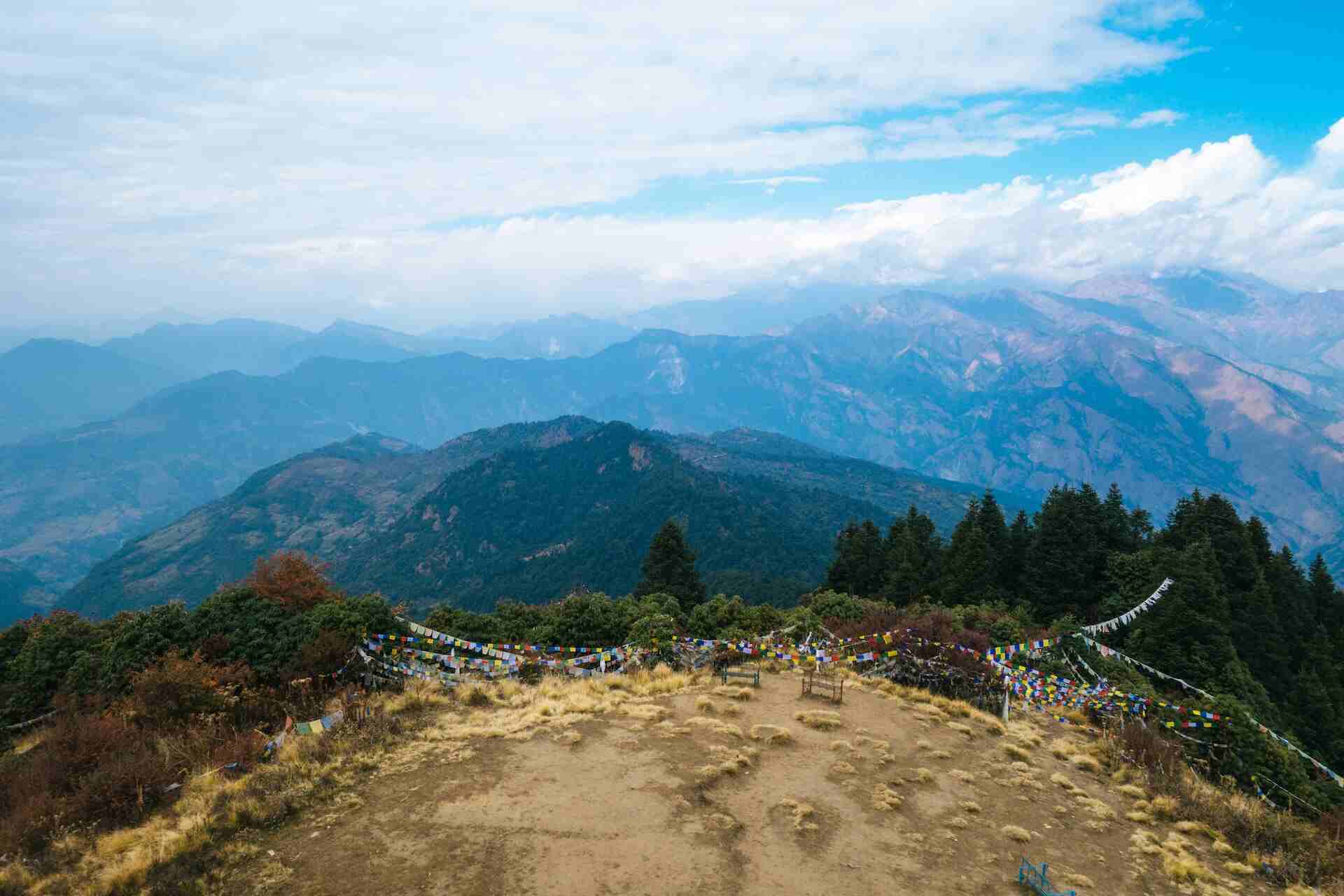 From $ 565
From $ 565
Poon Hill Trek
Poon Hill Trek – Breathtaking Views of Annapurna & Dhaulagiri!! Poon Hill, at 3,210 meters in the Annapurna Conservation...

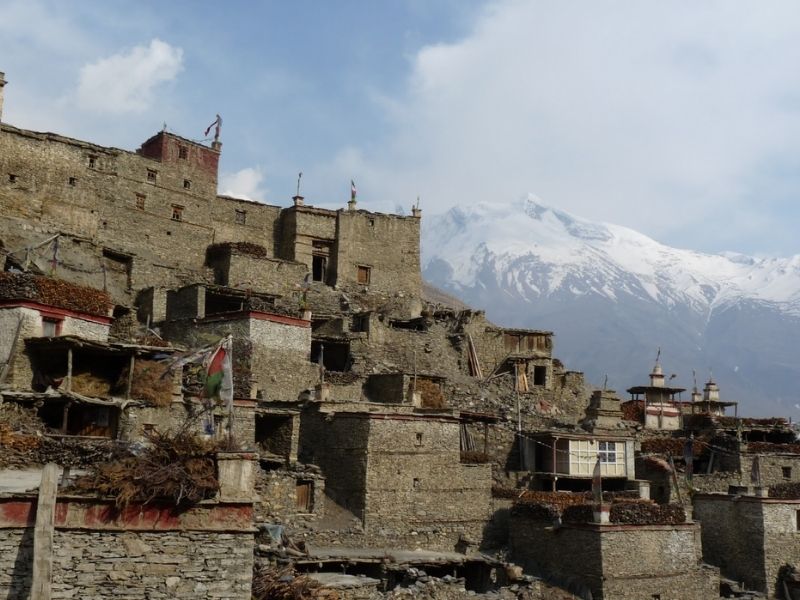
Nar Valley Trek
Explore the Remote Beauty of Nar Valley Trek – Annapurna Region Nar Valley, nestled in the serene Annapurna region,...

 From $ 685
From $ 685
Annapurna Base Camp Trek
Ultimate Annapurna Base Camp Trek: Unveiling Nepal’s Majestic Peaks!! The Annapurna Base Camp Trek (4130m), is nestled in the...

February
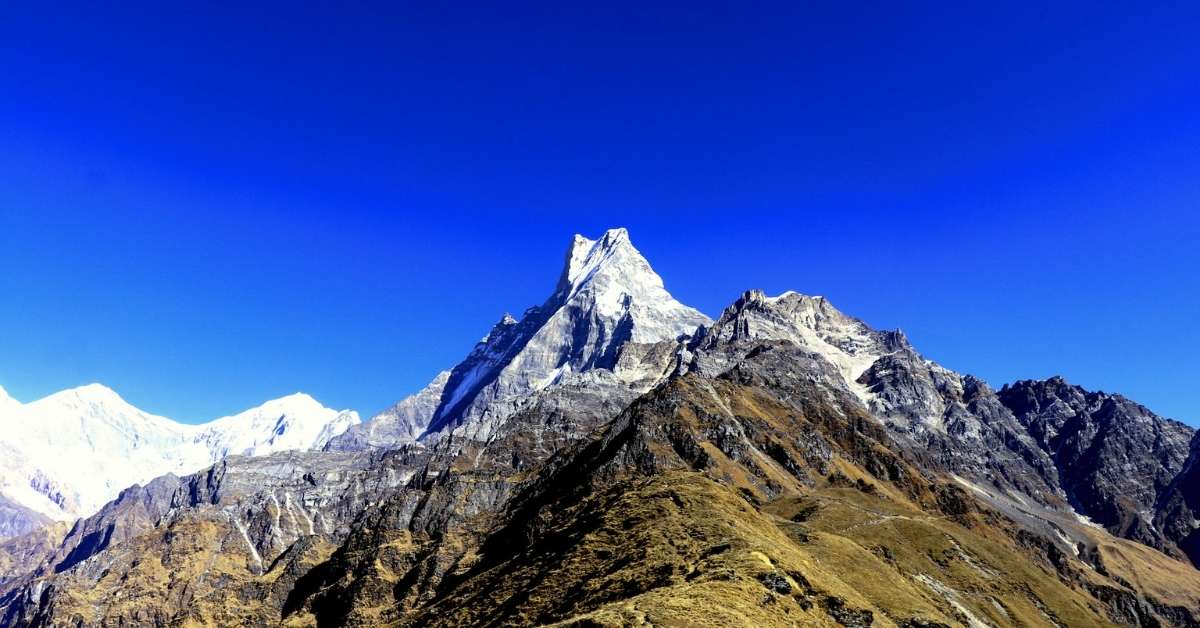
Mardi Himal Base Camp Trek
Unleash Adventure: 5-Day Mardi Himal Base Camp Trek to Serenity!! Mardi Himal Base Camp (4500 m) is a trekking...

Festivals: The Heartbeat of Annapurna
- Tiji Festival: Lo Manthang, Upper Mustang, is the site of this celebration. The celebration lasts three days and features rituals and masked dances. It is observed in order to ward off evil and guarantee prosperity and peace in the area.
- Yartung Festival: The Manang and Mustang regions observe this festival. The locals engage in races to show their skill as horsemen during this horse racing festival. The festival is bright and colorful, with traditional dances and music.
- Tibetan New Year (Losar): Celebrated in the regions of Upper Mustang and Manang, where Tibetan Buddhism is commonly observed, is the Tibetan New Year. The Tibetan lunar calendar begins on this day. Religious rites, vibrant processions, and colorful dances are all part of the occasion.
- Dashain and Tihar: Among the most significant Hindu holidays observed in Nepal are Dashain and Tihar. The longest and most important Hindu festival in Nepal is called Dashain, and it is widely observed. It usually lasts for 15 days and occurs in September or October. The celebration pays homage to the goddess Durga and represents the triumph of good over evil. Tihar, commonly referred to as the “Festival of Lights” or “Deepawali,” typically occurs in October or November and comes after Dashain. This five-day celebration emphasizes the relationship between brothers and sisters as well as a variety of animals, such as dogs, crows, and cows. Both celebrations feature vibrant decor, traditional customs, and the giving and receiving of blessings.
Accommodation Spectrum
- Teahouses and guesthouses: The most popular and reasonably priced lodging choices along the majority of the Annapurna region’s trekking routes are teahouses and guesthouses. These are simple accommodations that provide a bed in a common room; some might even have separate rooms available. Simple amenities like shared dining rooms and restrooms are sometimes available. Teahouses are helpful for trekkers because they frequently serve meals and snacks.
- Basic Lodges: More comfortable than teahouses, basic lodges can be found in various trekking locations. Usually, these lodges include individual rooms with hot showers and adjoining bathrooms. They might also feature dining rooms with a range of local and foreign dishes.
- Mid-Range Lodges and Hotels: Mid-range lodges and hotels are available in more developed and popular trekking sites, such as Pokhara. More amenities are provided by these lodgings, such as cozy rooms with private bathrooms, hot water, Wi-Fi, and on-site restaurants that provide a greater variety of meals.
- Luxurious Lodges and Hotels: Although they are less common than the other options, there are a few luxury lodges and hotels that provide premium services in specific areas. These places provide luxurious accommodations, excellent eating options, spa services, and breathtaking views of the mountains in the area.
- Camping: In some cases, camping may be necessary for trekking, especially in more isolated and remote regions. Trekkers have two options: either bring their own camping gear or work with trekking businesses that offer whole camping packages that include dining tents, tents, and cuisine.
Trekking Essentials & Pro-Tips
- Packing List: Having the proper equipment and necessities is essential when planning a trek in the Annapurna region to ensure your comfort and safety. A good backpack, proper clothing for the weather, durable and comfortable trekking boots, rain gear, a warm sleeping bag, a first aid kit, a water filtration system, a headlamp, trekking poles, and the necessary travel documents should all be on your packing list. Because you will be carrying your equipment, don’t forget to pack in layers for weather changes. You should also be aware of your weight. It’s also a good idea to pack some extra snacks and prescription medications.
- Altitude Sickness Prevention: In the Annapurna region, altitude sickness may be a significant risk, particularly during ascents to higher altitudes. Acclimate appropriately by rising gradually, staying hydrated, and stopping smoking and drinking to avoid altitude sickness. A doctor’s advice should be obtained before using medicine to prevent altitude sickness, and symptoms such as headaches, nausea, dizziness, and shortness of breath should be closely monitored. It is essential that you descend to a lower altitude if you encounter these symptoms. Always go on a trip with a local guide who can help you deal with concerns related to altitude.
- Communication: Maintaining communication and receiving updates is necessary when trekking in the Annapurna region. Keep a local SIM card on hand for communication purposes. Larger villages typically have coverage from local cell networks, though not always. Carrying a satellite phone or personal locator beacon (PLB) as a backup in case of an emergency is also a smart idea. Maintaining communication will ease your family’s concern and enable you to ask for assistance when necessary.
Sustainability in ACAP: Eco-tips
The goal of Nepal’s Annapurna Conservation Area Project (ACAP) is to protect the area’s biodiversity and natural beauty. Trekkers can support the organization’s sustainability efforts by adopting eco-friendly habits. This includes disposing of all non-biodegradable waste, utilizing reusable water bottles to cut down on plastic waste, and saving water by taking shorter showers and shutting off the water supply when not in use. Select locally grown and in-season foods to help the community’s economy and reduce the carbon impact of imported commodities. Remain mindful of the customs and cultures of the area while visiting eco-friendly teahouses and lodges that follow sustainable tourism practices. In the end, trekking in ACAP with an awareness of the environment helps preserve the area for future generations and guarantees its continuous beauty.
Join the ACAP Community
The Annapurna region’s sustainability and conservation initiatives can be actively supported by becoming a member of the ACAP community. You can become involved in coordinated cleanup and conservation efforts, educate yourself about the area fauna and ecology, and interact with the local communities. Giving of your time and resources supports continuing conservation efforts and enhances the well-being of the community. By becoming involved, you may directly contribute to the preservation of the area while also improving your understanding of it. To learn more about conservation initiatives and community events, get in touch with the ACAP office in Pokhara and contribute to improving the Annapurna region.

